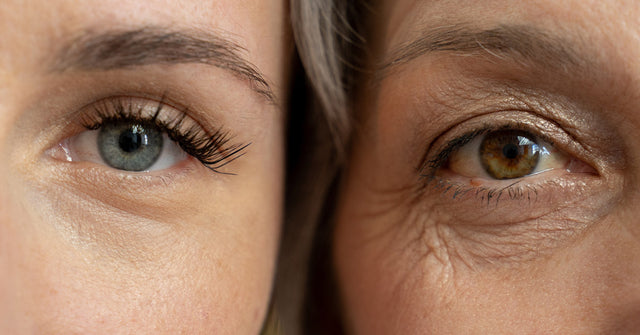Combination skin can be a challenge to manage, as it involves balancing the needs of both oily and dry areas on your face. Typically, this skin type exhibits oiliness in the T-zone (forehead, nose, and chin) while the cheeks and other areas may be dry or normal. Crafting a skincare routine that addresses these diverse needs can be a bit complex, but with the right approach, you can achieve a harmonious balance. This guide will walk you through the essentials of managing combination skin, including product recommendations, techniques, and tips to create a balanced routine.
What is Combination Skin?
Combination skin is characterized by having multiple skin types on different areas of the face. The T-zone often produces excess oil, leading to shine and potential breakouts, while other areas, such as the cheeks, can be dry and may feel tight or flaky. This dual nature requires a tailored approach to skincare, as using products meant for oily skin might exacerbate dryness, and those meant for dry skin might worsen oiliness.
Key Steps in a Combination Skin Care Routine
1. Cleansing
Cleansing is the first crucial step in any skincare routine, and for combination skin, it’s essential to choose a cleanser that effectively removes dirt and excess oil without stripping away moisture from drier areas.
Recommended Products:
-
Gel Cleansers: These are often ideal cleansers for combination skin, as they can clean oil and impurities from the T-zone without overly drying the cheeks. Look for gel cleansers with ingredients like salicylic acid, which helps control oil and prevent breakouts.
-
Cream Cleansers: For areas that are more sensitive or dry, a cream cleanser can provide additional moisture and comfort.
Routine Tip: Use a gentle cleanser such as Rejuvoderm twice daily—once in the morning and once before bed. Avoid over-cleansing, as it can disrupt your skin’s natural balance.
2. Exfoliating
Exfoliation helps remove dead skin cells and promotes cell turnover, which can improve skin texture and reduce the appearance of fine lines and pores. However, it’s essential to exfoliate correctly to avoid irritating the skin.
Recommended Products:
-
Chemical Exfoliants: AHA (alpha hydroxy acid) and BHA (beta hydroxy acid) exfoliants can work well for combination skin. AHAs, like glycolic acid, help with dry patches and surface texture, while BHAs, like salicylic acid, penetrate oilier areas to help clear pores.
-
Exfoliating Acids: Products containing a mix of AHAs and BHAs can provide balanced exfoliation for combination skin.
Routine Tip: Exfoliate 1-2 times a week to avoid over-exfoliation, which can lead to irritation and imbalance.
3. Toning
Toning helps restore the skin’s pH balance after cleansing and can prepare it for better absorption of other products. For combination skin, a toner that addresses both oily and dry areas is beneficial. To find the best toner for combination skin, look for options that balance oil production while providing hydration to dry patches. The ideal toner will help refine pores, soothe the skin, and enhance overall texture, ensuring a harmonious skincare routine.
Recommended Products:
-
Hydrating Toners: Look for toners with hydrating ingredients like hyaluronic acid or glycerin to maintain moisture levels without adding excess oil.
-
Balancing Toners: Toners with ingredients like witch hazel or rose water can help balance oil production and soothe the skin.
Routine Tip: Apply toner after cleansing, using a cotton pad or your hands to gently pat it onto your skin. For an effective option, consider Maxatone Hydrating Toner, which is designed to balance oil production while providing hydration to dry areas. This toner helps refine pores, soothe the skin, and enhance overall texture, making it an excellent choice for maintaining a harmonious skincare routine.
4. Moisturizing
Moisturizing is crucial for maintaining skin hydration and elasticity. For combination skin, choose a moisturizer that provides adequate hydration without causing excess oiliness. To find the best moisturizer for combination skin, look for products that balance hydration for both oily and dry areas, offering a lightweight formula such as Infusoderm Deep Hydration Daily Moisturizer which absorbs quickly and doesn’t clog pores. This approach helps keep your skin balanced and healthy, addressing the unique needs of each area of your face.
Recommended Products:
-
Gel-Based Moisturizers: These provide hydration without heaviness and are suitable for oilier areas.
-
Lightweight Creams: A lightweight, non-comedogenic cream can help hydrate drier areas without clogging pores.
Routine Tip: Apply moisturizer twice daily to both oily and dry areas to keep your skin balanced and hydrated.
5. Sun Protection
Sun protection is essential for all skin types, including combination skin. Sunscreen helps prevent premature aging and skin damage.
Recommended Products:
-
Oil-Free Sunscreens: These can protect the skin from UV damage without adding extra oil to the T-zone.
-
Moisturizing Sunscreens: For drier areas, consider sunscreens that offer additional hydration.
Routine Tip: Apply sunscreen every morning as the final step in your skincare routine, and reapply as needed throughout the day.
Additional Tips for Combination Skin Care
-
Spot Treatment: Use targeted treatments for specific concerns. For example, use a clay mask on the T-zone to control oil and a hydrating mask on dry areas.
-
Layering Products: Apply products according to their consistency—lightest to heaviest. For example, apply serums before heavier creams or oils.
-
Adjust Seasonally: Your skin's needs may change with the seasons. For instance, you might need a richer moisturizer in winter and a lighter one in summer.
-
Avoid Over-Use of Products: Using too many products can irritate combination skin. Stick to essential steps and introduce new products gradually.
-
Patch Testing: When trying new products, patch test them on a small area of your skin to avoid adverse reactions.
Frequently Asked Questions
How do I tell if I have combination skin?
You likely have combination skin if your face shows oiliness in the T-zone (forehead, nose, chin) while other areas, like the cheeks, feel dry or tight. Observing these differing textures and oil levels can help identify this skin type.
Is combination skin rare?
Combination skin is not rare; it's quite common. Many people experience a mix of oily and dry areas on their face, especially in the T-zone versus the cheeks.
Which skin type is best?
There isn't a "best" skin type; each type normal, oily, dry, combination, or sensitive has its own needs and challenges. The key is to find a skincare routine that addresses and balances your specific skin type effectively.
Conclusion
Navigating a skincare routine for combination skin involves balancing the needs of both oily and dry areas. By selecting the right products and following a consistent routine, you can effectively manage your skin’s unique characteristics. Focus on gentle cleansing, balanced exfoliation, and targeted treatments to achieve a smooth and healthy complexion. With the right approach, you can address the challenges of combination skin and maintain a radiant, well-balanced appearance.
Mentioned in this article
More stories

How to Address Bunny Lines: Effective Treatments and Tips






